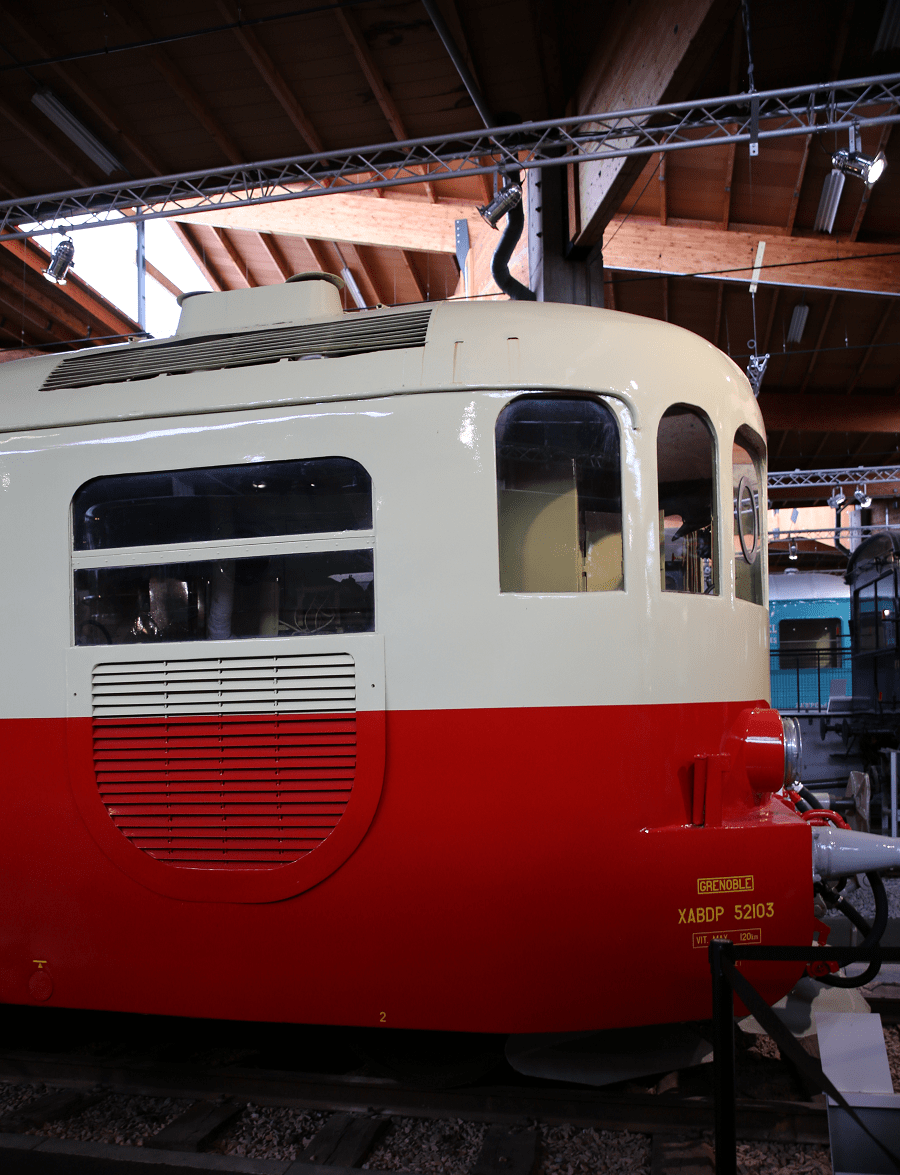The French Decauville X 52103 railroad automotor from 1945.
The SNCF X 52100 class are diesel railcars that operated on the alpine lines from Grenoble, France from 1945 until 1973. They were capable of multiple unit operation with other car types, requiring an operator in each car; the lead conductor giving acceleration or deceleration orders using an audible tone.
These were the first diesel-electric railcars used by the SNCF.
Decauville was a manufacturing company which was founded by Paul Decauville (1846–1922), a French pioneer in industrial railways. Decauville’s major innovation was the use of ready-made sections of light, narrow gauge track fastened to steel sleepers; this track was portable and could be disassembled and transported very easily.
The first Decauville railway used 400 mm (15+3⁄4 in) gauge; Decauville later refined his invention and switched to 500 mm (19+3⁄4 in) and 600 mm (1 ft 11+5⁄8 in) gauge.
The Decauville company, via its Decauville automobile car subsidiary, entered the automobile industry alongside the De Dion-Bouton company, for which it had made 3,000 motor tricycles. After several years of study, Decauville presented its Voiturelle (1898-1903).
This small three-seater vehicle, designed in Bordeaux by two engineers from the maritime couriers, was equipped with a gasoline engine. Decauville studied a new chassis which was presented in 1902 at the cycle show. Surprisingly modular (it was possible to interchange seats and engines) this Decauville 1902 model was a great success. However, from 1907 orders fell and a crisis began. Decauville’s lack of responsiveness led to the cessation of activity in the “automotive” branch in 1909. The sale of models in stock continued, however, until 1911













